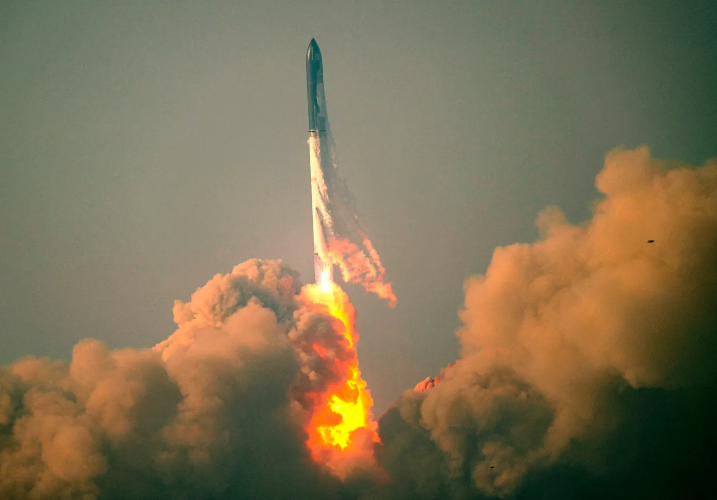SpaceX achieved a significant milestone with the second launch of the Starship, the most powerful rocket ever constructed. Despite intentionally detonating both the Super Heavy booster and the Starship upper stage mid-air, the mission marked a considerable success for SpaceX, renowned for its swift and iterative hardware development approach.
The rocket took off at 7:03 AM CST from SpaceX’s expansive Starship development and launch facilities near Boca Chica, Texas. Notably, all 33 Raptor engines on the Super Heavy booster remained ignited throughout the mission, a notable improvement from the initial launch that experienced the loss of approximately six engines between lift-off and flight.
This launch also demonstrated enhanced resilience in the launch infrastructure, including the orbital launch mount. The new water deluge system, designed to flood the launch area with water at engine ignition, effectively safeguarded the infrastructure. In the first launch, the force of the Raptor engines caused significant damage, sending debris into the air and destroying the orbital launch mount.
Another triumph occurred during stage separation, a phase not reached in the initial Starship orbital flight test. Employing a unique stage separation method called “hot staging,” where Starship’s engines ignite to propel the booster away, SpaceX successfully executed this critical maneuver on the second attempt.
Shortly after this stage, the automated flight termination system (FTS) onboard the Super Heavy booster was activated, resulting in a “rapid unscheduled disassembly” or an intentional explosion. The specific reason for this occurrence remains unclear. Still, SpaceX’s live launch webcast mentioned that the team would analyze data from the moments post-hot staging and pre-explosion to gain insights into the booster’s performance.
A similar fate befell the Starship’s upper stage. Just before the second engine cut-off, when Starship would have powered down its six engines and continued its ascent, SpaceX hosts announced data loss from the second stage. Subsequently, the automated FTS was triggered, although the exact cause remains uncertain.
The mission concluded approximately seven minutes after liftoff, and it’s crucial to note that no personnel or payload was onboard the vehicle. In a flight test, the ultimate objective is for the Starship to execute engine cut-off successfully, travel more than halfway around the Earth, and splash down in the Pacific Ocean.
Despite the challenges, SpaceX’s senior quality systems engineering manager, Kate Tice, expressed positivity during the webcast, referring to it as an “incredibly successful day” despite the “rapid, unscheduled disassembly” of both the Super Heavy booster and the Starship.
Standing at an impressive 397 feet tall and approximately 30 meters in diameter, Starship is the most giant rocket ever constructed by humanity. To contextualize its power, Super Heavy’s 33 Raptor engines generate 16.7 million pounds of thrust, significantly surpassing the 1.7 million pounds produced by Falcon 9, SpaceX’s reliable workhorse rocket.
The success of Starship is pivotal to SpaceX’s mission. In the short term, this involves the capability to launch numerous heavier Starlink satellites simultaneously. Looking ahead, the goal is to leverage the revenue from an enhanced Starlink constellation to fund a mission to Mars.
SpaceX’s Starship is not only crucial for the company’s ambitions but also for NASA’s plans. NASA has awarded SpaceX contracts amounting to around $4 billion to develop a lunar landing system using Starship. This system is intended to transport astronauts to the moon as part of NASA’s Artemis program, with the first landing mission, Artemis III, scheduled for 2025.

